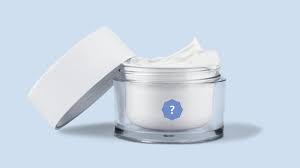
Aquaporins in Skincare and Injectable Fillers
As a dermatologist and skin care expert, patients often ask me about the latest skin care ingredients like aquaporins. Aquaporins have gained attention recently because their activity increases when SkinVive, a form of hyaluronic acid, is injected into the skin . But what are aquaporins and do they really hydrate your skin when added to creams? Here’s what you need to know about aquaporins in skin care and the skin.
What Are Aquaporins?
The definition of aquaporin is a pore that water and certain substances can pass through to move between cells. Aquaporins (AQPs) are integral membrane proteins that form water channels to facilitate water transport between cells. There are 13 types of aquaporins found in mammals. Aquaporins 1, 2, 4, 5 and 8 transport only water, while 3, 7, 9 and 10 also transport glycerol and other small solutes.
Skincare Products that Stimulate Aquaporin
Aquaporin itself does not work when you put it in skincare products, so do not look for aquaporin on the label. Instead look for ingredients that stimulate aquaporin activity. Here are some products that act on aquaporin channels:
To find out which of these products is best for your skin type, take the skin type quiz and shop by your Baumann Skin Type (There are 16 skin types!)
How do Skincare Ingredients Activate AQP?
Though aquaporins themselves do not require energy, their activity can be stimulated by substances that increase their expression and accumulation in the cell membrane. For example, aquaporin expression and membrane localization is stimulated by growth factors and cytokines, increasing the number of aquaporin channels available for facilitated diffusion of water and solutes.
The key is that the aquaporin proteins themselves do not require energy to transport water/solutes, but their abundance and activity in the membrane can be upregulated by other cellular signaling processes that do require energy. The aquaporins then mediate passive, downhill water transport through the additional channels inserted in the membrane.
Skincare Ingredients That Act on Aquaporin
You will not see aquaporin listed on product labels, instead look for ingredients that stimulate aquaporin. The origianl wok on aquaporin was done by F. Bonte at Christian Dior skincare. He showed that Ajuga turkentanica stimulated Aquaporin 3 and Dior was the first skincare line to have this technology.
Ajuga turkestanica
Ajuga turkestanica is an herb used in traditional medicine and bodybuilding supplements. It contains bioactive compounds like phytoecdysteroids and iridoid glycosides.
Studies show A. turkestanica extracts can increase aquaporin-3 (AQP3) expression and activity in skin cells. AQP3 is vital for shuttling water and glycerol between keratinocytes to hydrate skin.
In cultured human epidermal cells, A. turkestanica treatment elevated AQP3 protein levels. When applied topically on volunteers, it increased AQP3 gene expression and reduced transepidermal water loss.
Through stimulating AQP3, A. turkestanica improves epidermal differentiation and hydration. It enhances skin’s natural moisturizing channels, leading to better barrier function.
A. turkestanica represents a unique botanical ingredient that acts on intrinsic aquaporin pathways. While aquaporins themselves don’t penetrate skin, A. turkestanica provides a means of modulating these water transporters.
Cannabinoids
Recent studies 926) have uncovered a role for the cannabis-derived compound cannabidiol (CBD) in modulating aquaporins, specifically aquaporin-3 (AQP3). AQP3 is highly expressed in epidermal keratinocytes and is critical for skin hydration by transporting water and glycerol. In a study on hairless mice, daily topical application of 1% CBD solution significantly increased skin hydration. This moisturizing effect was accompanied by increased AQP3 expression in the skin at both the mRNA and protein levels. However, CBD did not alter other moisturizing factors like hyaluronic acid, ceramides or filaggrin. The selective stimulation of AQP3 indicates it likely contributes to CBD’s skin hydrating properties.
CBD may increase AQP3 by activating PPARγ receptors, although the exact mechanisms are still unclear. Overall, CBD shows promise as a cosmetic ingredient capable of boosting skin hydration. By upregulating AQP3, CBD can enhance the skin’s endogenous water retention and barrier function.
This face oil has cannabis seed oil, jojoba oil, moringa seed oil, rosa canina seed oil and linoleic acid to hydrate skin. The cannabis will help stimulate aquaporin channels.
Glyceryl Glucoside
Glyceryl glucoside is a natural humectant that may stimulate aquaporin-3 (AQP3) activity to hydrate skin. AQP3 transports water and glycerol in epidermal keratinocytes, playing a key role in skin moisture balance.
In a study on cultured human keratinocytes, glyceryl glucoside increased AQP3 mRNA and protein levels. When applied topically on volunteers, glyceryl glucoside penetrated into intact epidermis and upregulated AQP3 gene expression.
This AQP3 stimulation was accompanied by improved barrier function, indicated by reduced transepidermal water loss. Glyceryl glucoside draws moisture into skin and stimulates skin’s natural moisturizing channels.
Products with Glyceryl Glucoside:
Eucerin Aquaporin Active for Dry Skin
Zerafite Wrinkle Defense Barrier Cream
This product is a superior barrier repair moisturizer. It stimulates aquaporin channels, shows the maltese cross pattern under a microscope, and has the correct 1:1:1 ratio of ceramides, fatty acids and cholesterol. It also contains many antiaging ingredients and ingredients to help protect the skin from pollution.
Retinoic acid
Retinoic acid, a derivative of vitamin A, has been widely used to treat skin conditions like abnormal keratinization, acne and skin aging. However, one of its most common side effects is dry, peeling skin and irritation.
Some evidence suggests retinoids like retinol influence aquaporin expression.
A study (6) on cultured human HaCaT keratinocytes found retinoic acid drugs increased AQP3 mRNA, protein levels, and cell numbers. This aquaporin stimulation occurred with isotretinoin, acitretin, and adapalene treatment.
Higher aquaporin activity allows more water loss, potentially explaining retinoic acid’s drying effects. Proper dosing may reduce side effects while benefiting from AQP3’s barrier repair effects.
Overall, retinoic acid seems to modulate AQP3 expression in vitro. Further exploring this relationship and aquaporin regulation may improve retinoid therapy.
Below are some good retinols for beginners. Retinol turns into retinoic acid in the skin.
[[T11]]
Turmeric
The common spice turmeric contains the active compound curcumin. Studies show curcumin can increase AQP3 expression and glycerol transport in cultured human keratinocytes. It may act by activating PPARγ receptors. Applying turmeric extracts to mouse skin also elevates AQP3 levels. Turmeric’s ability to boost aquaporins likely contributes to its skin hydrating benefits.
These skincare products have turmeric:
Dermal Fillers and AQP
Hyaluronic acid fillers like SkinVive, Restylane, Juvederm and Voluma have high water-binding capacity. When injected as dermal fillers, they absorb water from surrounding tissues. This causes the fillers to expand, which stretches and hydrates the skin. This mechanical action is believed to stimulate aquaporins, opening the water channels so they transport water more efficiently into skin cells. However, the exact mechanisms require further study for definitive confirmation.
Types of AQPs
Aquaporin 3
AQP3 is the main aquaporin in human epidermis and is permeable to both water and glycerol. For years scientists have known glycerol plays a key role in hydrating skin. The reasons became clearer after AQP3 was discovered. Studies show AQP3 defects in mice lead to epidermal dryness, decreased hydration, glycerol content, elasticity and impaired barrier recovery.
AQP5
Aquaporin-5 (AQP5) is another water channel protein found in the skin, specifically in sweat glands. AQP5 is highly expressed in the secretory coils and ducts of sweat glands. It plays a key role in producing and secreting sweat in response to heat or other stimuli. Studies in mice show AQP5 knockout impairs sweating, indicating its importance in sweat gland function. AQP5 may also help regulate epidermal proliferation and differentiation. Its expression was found reduced in some inflammatory skin diseases like atopic dermatitis, suggesting a potential involvement in disease pathogenesis. However, more research is still needed on the precise functions and regulations of AQP5 in skin physiology. Modulating AQP5 may present opportunities to treat certain sweat gland disorders like primary focal hyperhidrosis, which is characterized by excessive sweating. Overall, AQP5 represents another aquaporin integral to maintaining skin hydration and homeostasis through its sweat-producing role.
AQP9
This aquaporin 9 is only found in the stratum granulosum layer of the epidermis. It seems to transport glycerol and urea.
aquaporin hydration
How Do AQPs Hydrate Skin?
Aquaporins facilitate water, glycerol and solute transport between keratinocytes. This powers many skin functions like hydration, proliferation, differentiation and barrier repair.
AQP3 brings water and glycerol into cells. Glycerol acts as a natural moisturizing factor, while water maintains hydration. AQP3 also aids epidermal development and wound healing. Overall, aquaporins are dynamic channels that enable skin’s constant hydration.
Getting AQP Into Skin
Topical products may contain aquaporins or “activate” them. When formulated in skin care products, aquaporins are too large an these proteins can’t penetrate deep enough to have real impact when applied topically.
Instead, look for ingredients that boost natural aquaporin levels like ajuga turkenstancia, ceramides, niacinamide, and turmeric. Retinoids and antioxidants help too by preventing UV-related declines in AQP3.
Injectables like Skinvivé (TM) with hyaluronic acid are interesting because they seem to activate AQP3 in skin.
Aquaporins and the Skin Barrier
The skin moisture barrier prevents water loss and protects from irritants. When compromised like in dry skin or eczema, aquaporin activity changes:
AQP3 is increased, leading to excess water loss.
AQP5 is reduced in inflammatory conditions, disrupting normal water balance.
While not fully understood, aquaporins are vital for normal barrier function.
aquaporins for inflammation
Aquaporins in Skin Inflammation
Rosacea
Recent studies have uncovered a role for aquaporin-3 (AQP3) in the inflammatory skin condition rosacea. Rosacea is characterized by facial redness, pimples, and dilated blood vessels.
One study (16) demonstrated that AQP3 is upregulated in the epidermal keratinocytes and dermal CD4+ T cells of rosacea patients and mouse models. In mice with rosacea induced by LL37 application, AQP3 knockout led to resistance to disease development.
In keratinocytes, AQP3 plays an essential role in NF-κB activation and subsequent chemokine production. NF-κB stimulates the release of chemokines that recruit immune cells, amplifying inflammation.
Additionally, AQP3 deficiency inhibited T helper 17 (Th17) cell differentiation, possibly by decreasing phosphorylated STAT3 levels. Th17 cells drive autoimmune responses and are implicated in rosacea.
Collectively, these findings suggest AQP3 is required for activating epidermal NF-κB and chemokine signaling. It also reveals a previously unknown role for AQP3 in Th17 cell-mediated immunity in rosacea pathogenesis.
The study shows AQP3 expression correlates with rosacea severity. This and other evidence suggests AQP3’s involvement in the characteristic inflammation of rosacea.
Indeed, AQP3 deletion attenuated the inflammatory phenotype in mice. Analyses revealed AQP3’s participation in inflammation-related NF-κB and Th17 cell pathways. AQP3 may therefore be a novel therapeutic target for managing rosacea.
Acne
AQP3 expression and activity is increased in acne-affected skin compared to normal skin, facilitating greater water transport through the epidermis. This AQP3 upregulation may contribute to some pathophysiological features of acne including excess sebum production, abnormal keratinocyte proliferation and inflammation.
Research indicates that AQP3 is overexpressed in acne lesions versus non-lesional skin. By increasing water permeability in the epidermis, altered AQP3 expression and function may be implicated in acne pathogenesis. However, more research is still needed to fully understand its specific contributions.
Aquaporins enable hydration, barrier function and more by shuttling water and solutes between cells. While topical aquaporins likely don’t work, modulating them with ingredients, medications or specialized injectables has promise.
To find the best skincare products for your skin type, take the skin care routine quiz and build a custom skin care routine from many brands.


